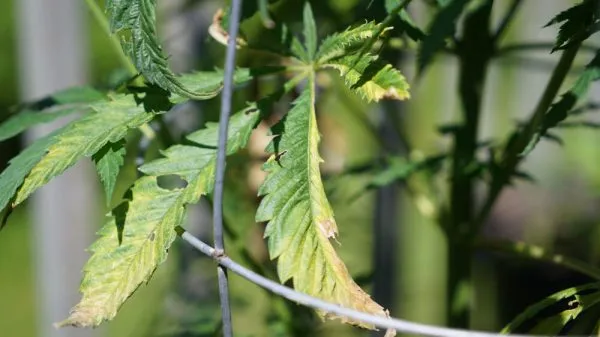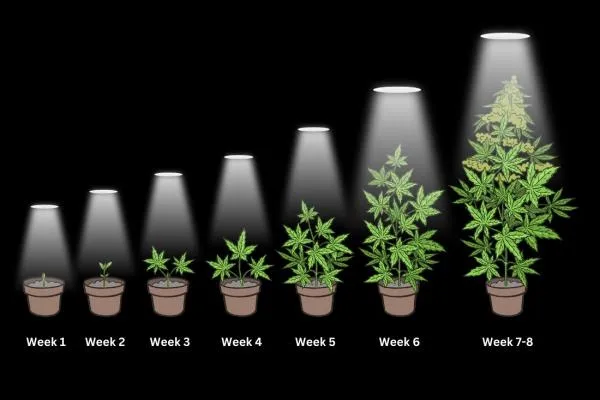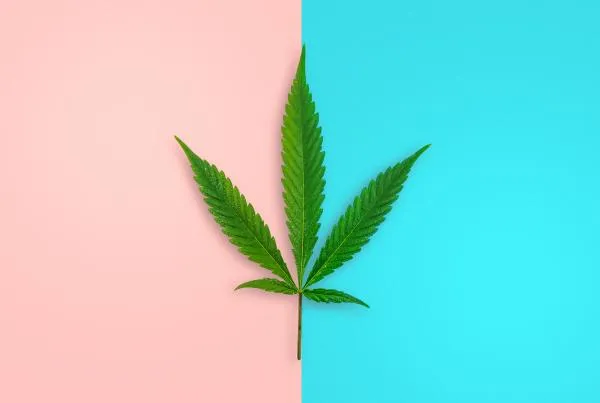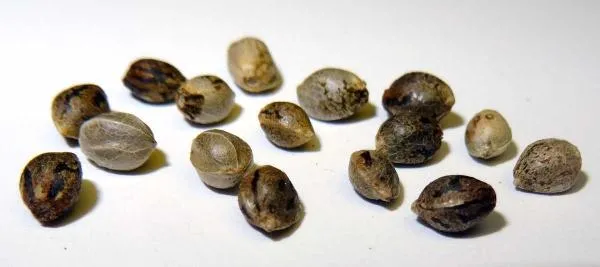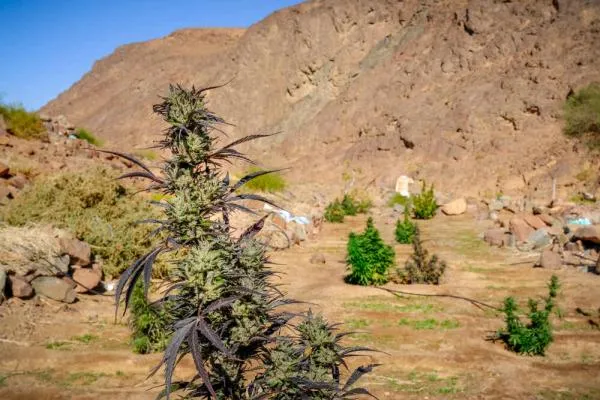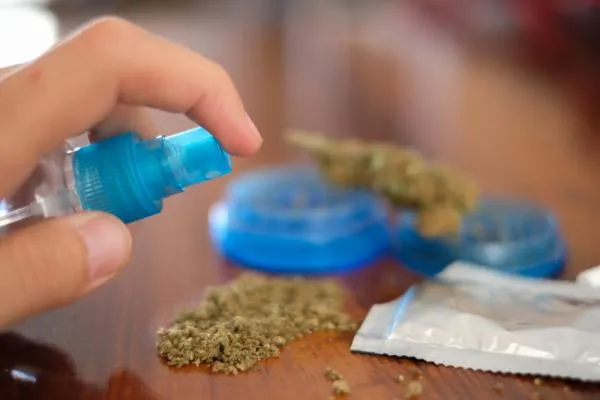Potassium is one of the "big three" macronutrients essential for plant growth, standing alongside nitrogen and phosphorus as key players in healthy development.
Playing a crucial role in so many physiological processes, a lack of potassium can heavily affect the health and development of any plant, but especially so in cannabis plants - where fine-tuning nutrient levels is pretty important.
Understanding potassium deficiency in cannabis plants
What is potassium deficiency?
Exactly as the name describes, a potassium deficiency is where a plant is lacking in the essential nutrient potassium. This can happen for a surprisingly wide range of reasons (which we will dive into a little further down), but the end result is a weed plant that:
- Struggle to grow and develop properly, leading to stunted growth.
- Display visible signs of nutrient deficiency, such as yellowing or discolored leaves.
- Become more vulnerable to diseases, pests, and environmental stresses.
Potassium deficiency isn’t just a minor hiccup - it’s a major issue that needs to be addressed as soon as possible, and as always, prevention is key.
Importance of Potassium for Cannabis Health
In cannabis cultivation, this macronutrient has a hand in every stage of growth, and every system within the plant. It helps to strengthen cell walls, regulate water and nutrient uptake, and support photosynthesis.
- Regulates water and nutrient flow: Potassium acts almost like a system designed to control a traffic network, helping plants absorb water and nutrients from the soil while ensuring they’re distributed efficiently. This regulation supports proper hydration and nutrient balance, preventing wilting, weak stems, and poor growth.
- Supports photosynthesis: Potassium is responsible for managing the opening and closing of stomata - the tiny pores on leaves that control gas exchange. When functioning properly, these stomata allow the plant to take in carbon dioxide and release oxygen, powering photosynthesis. More efficient photosynthesis means more energy for robust growth and development.
- Strengthens plant defenses: Potassium makes cannabis plants more resistant to pests, diseases, and environmental stresses like drought or extreme temperatures. Think of it as a natural immune booster, helping plants survive when times get tough.
- Enhances bud development: Potassium promotes dense, sticky-icky buds by supporting flower formation and overall quality. If your potassium levels drop during flowering, expect light/airy buds with less-than-ideal resin coverage.
Causes of potassium deficiency
When your cannabis plants aren’t getting enough potassium, it’s not always about what you’re feeding them, but often about what’s getting in the way.
Here are the usual reasons potassium deficiency shows up uninvited:
Soil composition and pH levels
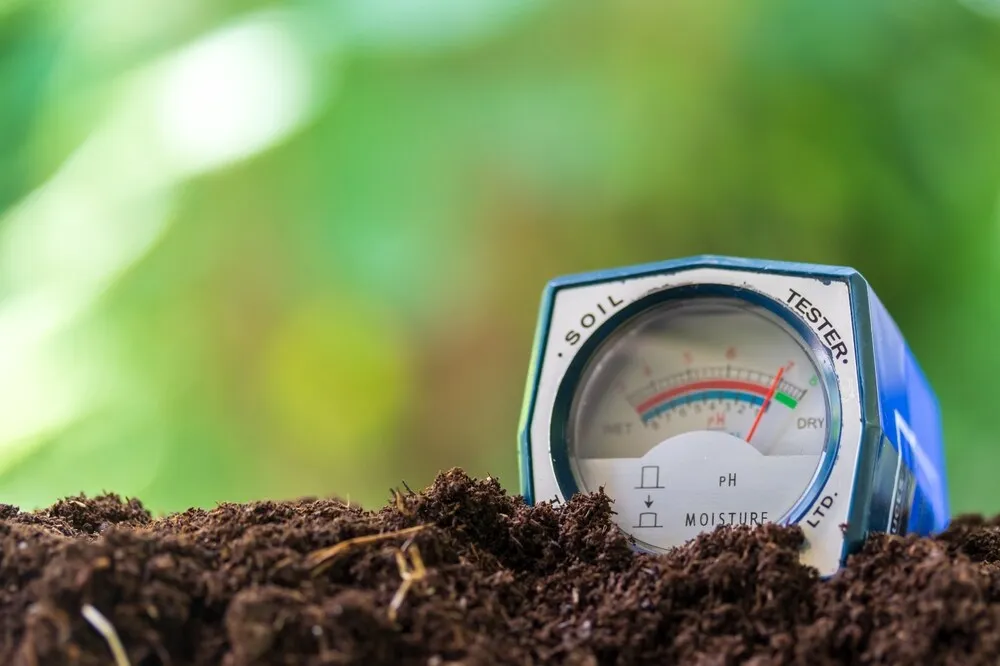
The very first thing to check if you suspect a nutrient issue (potassium deficiency or otherwise) is the pH level of your soil or growing media.
Why?
Because pH is like the gatekeeper of nutrient availability.
For soil growers, the sweet spot for cannabis plants lies between 6.0 and 7.0. If the pH creeps outside this range, your plants’ roots will have a much harder time absorbing potassium, even if it’s sitting there in waiting to help. Too low, and the environment becomes too acidic / too high, and it’s overly alkaline. Either way, your plants are missing out.
Beyond pH, the composition of your soil also plays a role. Heavy, compacted soils can suffocate roots, making it harder for them to access the potassium they need. On the other hand, sandy soils drain too quickly, washing potassium away before plants have the chance to absorb it.
Start with a decent soil base, and check the pH of your feed water from time to time (this is much more important for growers using liquid nutrients, but soil-grown plant rarely need pH adjusting), avoid over or under watering, and you’ve got a good foundation for healthy nutrient uptake.
Nutrient lockout and imbalances
Sometimes, your plants aren’t lacking potassium - it’s just being bullied out of the way by other nutrients hogging the space. Too much calcium, magnesium, or sodium can block potassium uptake, which we refer to as 'nutrient lockout. This often happens when you’ve gone a little too heavy-handed with fertilizers.
Overfeeding is one of the first mistakes most new growers make, but it’s also one of the easiest to fix. Flush your crop with a healthy amount of pH-regulated water and cut back on the nutrients for a while. When you restart, keep an eye out for signs of overfeeding and adjust your dosage accordingly.
Potassium deficiency in hydroponic systems
Growing hydro (or with coco-coir as your medium)?
Potassium has its own unique challenges there. Most hydro/coco growers are going to be using liquid synthetic nutes and remember - this is your crops' feed we are talking about here. Whatever you do, DO NOT skimp on your nutrient budget. Make sure you’re using a quality hydroponic-specific (or coco-coir specific) nutrient line and that you stick to the recommended dosage.
For hydro and coco, you are going to want to check the pH of every single feed - ideally, using a digital meter. A range of 5.5 to 6.5 is where you want to be, and you want to let that number drift a little within that range for optimal nutrient uptake.
Identifying potassium deficiency in cannabis
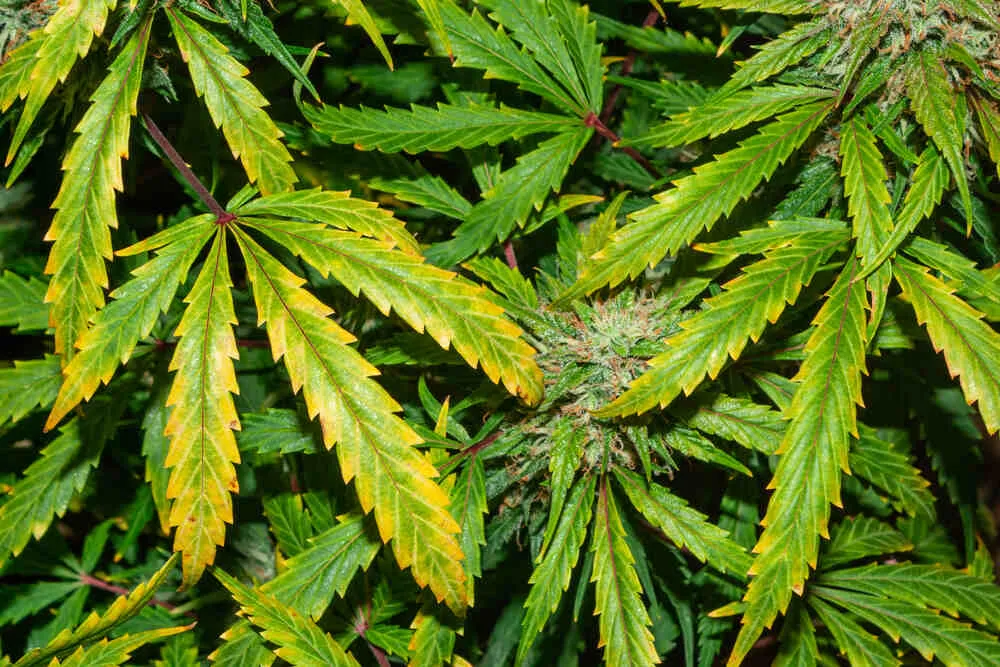
Spotting potassium deficiency early can save your plants from serious damage, but as with most nutrient issues, working out exactly which one is responsible can be a real pain. So many of the symptoms are similar (or the same) as other deficiencies, so how do you tell them apart?
Since potassium is a mobile nutrient, meaning the plant can move it around to where it's needed most, deficiencies usually show up in older, lower leaves first before affecting new growth. Here’s what to look out for:
Leaf discoloration and yellowing
One of the first signs of potassium deficiency is yellowing along the edges of older leaves.
Unlike nitrogen deficiency, which causes uniform yellowing across the entire leaf, potassium deficiency usually starts at the margins, creating a scorched, faded appearance. This yellowing gradually works its way inward, giving the leaves a distinct, unhealthy look.
Another telltale sign is a blotchy, patchy discoloration rather than a smooth fade.
As the issue progresses, affected leaves may become weak and brittle, making them more prone to curling or dropping off entirely. If left unchecked, this yellowing will spread upward, eventually affecting younger leaves and overall plant health.
Brown spots and burnt leaf tips
As potassium deficiency worsens, yellowing leaves begin to develop brown, necrotic spots, usually appearing first along the edges.
The leaf tips may also start to look burnt or crispy, similar to nutrient burn, but without the dark, overfed appearance that typically accompanies excessive fertilization.
In many cases, these burnt edges will curl up or twist, a classic sign of potassium starvation. Potassium regulates water movement within the plant - without enough of it, leaves lose their ability to hold moisture properly, leading to dried-out, scorched foliage.
This is one of the later stages of potassium deficiency, so if you spot brown spots or burnt tips on your leaves, it’s time to take action, and quick.
Stunted growth and reduced flowering
Potassium plays a huge role in cell division and energy production, so when plants don’t get enough, growth slows dramatically.
Sure, we talked about how potassium is a mobile nute, so if affects older growth first, but...
Younger leaves might appear weak and undersized, and the plant's overall structure may look thin and underdeveloped - especially during flowering, where the plant focuses its energy on producing buds. Speaking of flowering, if you’re not seeing really loose, airy buds that don’t look like they will ever fill out or swell, it's most likely due to low levels of potassium.
How to prevent potassium deficiency
As always, PREVENTION IS KEY.
Get every aspect of your grow dialed in from the very beginning, and you’ll be rewarded with the type of plants, and in time buds, that we all dream of.
Choosing the right fertilizers and amendments
The best way to prevent potassium deficiency is to start with a nutrient-rich growing soil (if that's your preferred growing medium) and feed your plants with a well-balanced fertilizer that provides ample potassium.
If you start with a great soil base, you won't need to feed your plants as much or often but remember to check the pH of your water and soil regularly to ensure proper nutrient uptake.
When selecting fertilizers, keep an eye on the NPK ratio - you want a formula that delivers enough potassium for each stage of growth.
For vegging plants, balanced fertilizers like 10-10-10 or 20-20-20 work well, providing steady amounts of potassium alongside nitrogen and phosphorus.
During flowering, weed plants need higher potassium levels, so it’s best to switch to a cannabis-specific bloom booster. There's a bunch to choose from but do a little research before making a purchase. Remember, quality over quantity here.
If you prefer organic amendments, there are plenty of natural sources of potassium:
- Wood ash is high in potassium, but use sparingly, as it can raise soil pH.
- Kelp meal provides a slow, steady release of potassium and essential trace minerals.
- Composted banana peels are a simple DIY method to boost potassium naturally.
Choosing the right fertilizers from the start keeps your plants thriving and ensures they get the potassium they need without deficiencies creeping in.
Monitoring soil pH and adjusting when necessary
If your root zone pH is outside the ideal range, potassium won’t be absorbed efficiently- simple as that.
For soil-grown cannabis, pH should sit between 6.0 and 7.0, while hydroponic setups require a slightly lower range of 5.5 to 6.5.
To prevent pH-related potassium lockout:
- Test the pH of your 'feed water' regularly using a pH meter.
- You can also test the 'run off' of your plants - doing so will give you an idea of the pH level of your root zone.
- Soil pH testing kits are widely available but only give a broad range reading.
- Digital pH meters are needed for all liquid nutrient-fed grows, but they are also really accurate and easy to use. The best option in my opinion.
Keeping a close eye on pH levels prevents lockout and ensures your plants can actually use the potassium available in the soil.
Regular soil testing for balanced nutrient levels
Potassium imbalances don’t always happen overnight - sometimes they build up over time due to nutrient competition, soil depletion, or inconsistent feeding.
But, for home growers, soil testing isn't the easiest (or cheapest) option. A balance of starting with high-quality (even cannabis-specific) soil, regular pH testing, and general observation will give you a good idea of your plants' nutrient levels.
If you start with a great soil base, you shouldn't need to use any additional fertilizers until flowering, and even then, using a high-quality bloom booster should provide all the potassium your plants need.
How to fix potassium deficiency in cannabis plants
Fixing potassium deficiency is all about addressing the root cause, whether that’s an imbalance in nutrients, improper pH levels, or issues with your growing medium.
Adjusting fertilizer ratios
If potassium deficiency is caused by insufficient nutrients, the quickest way to fix it is to adjust your fertilizer ratios. This means increasing the potassium content in your feeding routine without throwing other nutrient levels out of balance.
- For soil growers, use potassium-rich fertilizers like potassium sulphate, potassium nitrate, or mono-potassium phosphate. These are fast-acting and will deliver the needed boost quickly but remember to use them sparingly.
- If you prefer an organic approach, you can top-dress your soil with kelp meal, wood ash, or composted banana peels. Water them in and wait for magic to happen.
- You can look to a foliar feed, too, if you have no other option. A foliar spray can temporarily fix deficiencies in vegging plants, but it's not a long-term solution.
Remember to avoid overfeeding. Too much potassium can create new problems, such as nutrient lockout, so start with small adjustments and monitor how your plants respond.
Correcting soil pH levels for optimal potassium absorption
We have covered this above, but it's worth repeating - proper pH levels are necessary for nutrient uptake, and potassium is no exception. If your soil pH is too high or too low, you'll need to adjust it before your plants can absorb potassium effectively.
Use a pH-adjusting solution or natural methods like dolomite lime to bring the pH back into the correct range. You may want to flush the entire crop with a decent amount of pH-balanced water to help that root zone recalibrate.
Fixing potassium deficiency in hydroponics
Thankfully, fixing nute issues in hydro set-ups is pretty straight forward. Once you have identified a potassium deficiency, make sure the pH of your nutrient solution is between 5.5 and 6.0 (or within the recommended range for your specific hydro system).
Next, increase the potassium levels in your nutrient mix by adding a supplement - PK boosters work well for this. I do not like adding other fertilizers, as they tend to have too much N and P for an already balanced grow.
